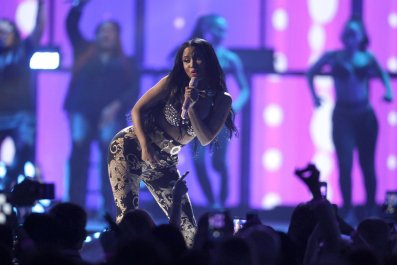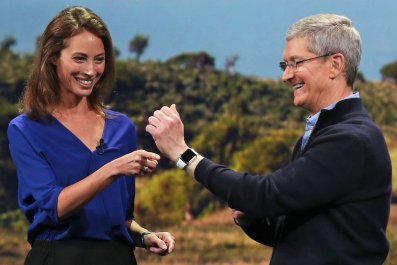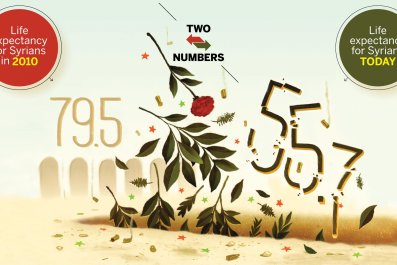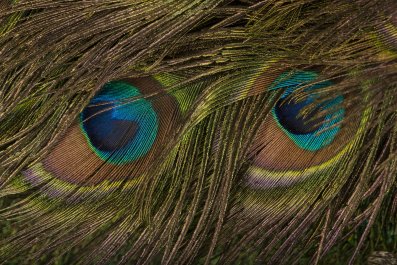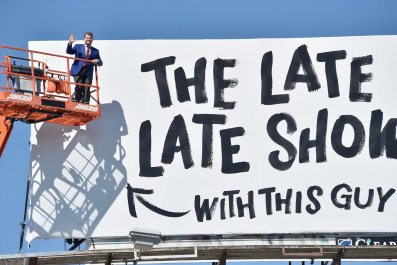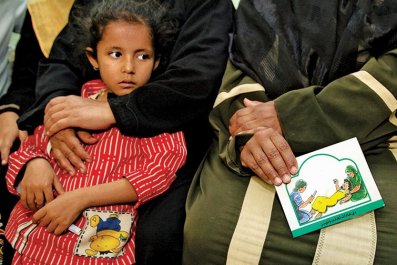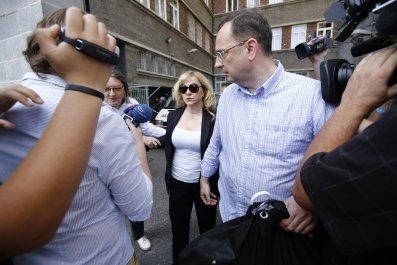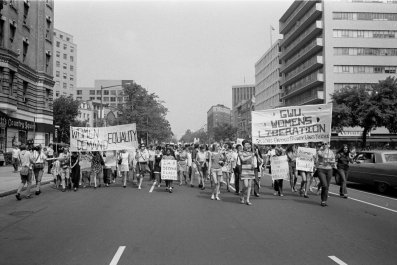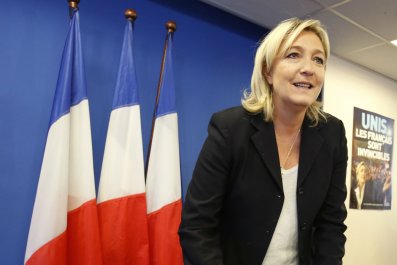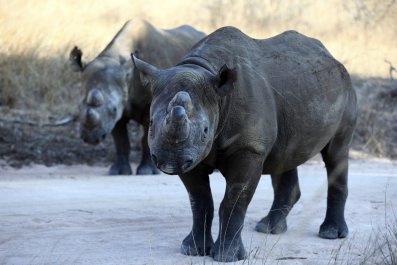On the evening of November 24, 2014, a grand jury in St. Louis County, Missouri, declined to indict Darren Wilson, a white officer with the Ferguson Police Department, for the killing of black teenager Michael Brown. The next day, there were protests all over the country. One of those protests took place in Portland, Oregon. In the midst of that demonstration, a white police officer, Sgt. Bret Barnum, hugged a black 12-year-old, Devonte Hart. Their embrace was captured by the photographer Johnny Nguyen. Once online, the image went viral, a symbol of healing and hope at a time of despair and strife. The Oregonian, which first published the photograph, later called it "the hug shared around the world," noting that it was posted on Facebook 150,000 times in the immediate wake of its publication. That number would rise dramatically in the ensuing days, as the image achieved the kind of virality your average infectious disease can only dream of: As of this writing, the original Oregonian post has 444,000 Facebook shares and 9,700 retweets. In fact, the story of what happened to the image quickly eclipsed what was happening in the image.
The moment between Barnum and Hart seemed to affirm that this is, as Louis Armstrong once growled, a wonderful world. But the hug also spoke to a more mundane truth, one Satchmo never had to ponder: On the Internet, news of how wonderful the world can be sells. Entire digital enterprises are devoted to images, videos and stories meant to inspire and uplift. On the The Good News Network, for example, you are greeted with a paean to fatherhood: "Single Dad Couldn't Do Daughter's Ponytail, So Went to Cosmetology School." There are plenty of others: DailyGood ("News that inspires"), "Gimundo" ("Good news… served daily") and The Intelligent Optimist ("an independent international media platform focused on solutions, possibility and inspiration"). Though less explicitly geared to good news, Upworthy is nevertheless the master of the genre: "Economists Assume People Are Self-Interested. He Turned That Assumption Upside Down" and "If You Take a Puppy Video Break Today, Make Sure This Is the Dog Video You Watch."
Take that, ISIS beheading videos!
"We need to be informed by a worldview that is not dripping with sensationalism and attuned to the police scanner," the editor of the Good News Network recently told the Columbia Journalism Review, which deemed the trend "the glass-half-full beat." Whether the beat can also fill corporate coffers—a fair question in an age when many newsrooms are prepping their own obits—nobody has ascertained with satisfaction. "Researchers are discovering that people want to create positive images of themselves online by sharing upbeat stories. And with more people turning to Facebook and Twitter to find out what's happening in the world, news stories may need to cheer up in order to court an audience," Eliana Dockterman wrote for Time in 2013.
Last year, however, Quartz described how a Russian website, City Reporter, decided to devote itself, for a single day, to "a smorgasbord of sunshine, lollipops, and rainbows." It promptly lost the majority of its readers. "Our fascination with negativity may be even more pervasive than we thought," Quartz concluded.
The battle has been joined, you inspiration editors and optimism ninjas!
The lure of the feel-good viral video is seducing even vaunted newsrooms in Manhattan. In a recent staff memo, Huffington Post founder Arianna Huffington announced that her mammoth aggregating outfit would "start a positive contagion by relentlessly telling the stories of people and communities doing amazing things, overcoming great odds, and facing real challenges with perseverance, creativity and grace." She pronounced dead "the era of 'if it bleeds, it leads.'"
A similar sentiment was expressed by Shani O. Hilton, the news editor of BuzzFeed, in an interview with Capital New York. "I like to like things, and it's nice that I work at a place where our default stance is to like things," she said. It was odd to see a news editor—and a highly capable one, judging from what I've read—strike a tone of uncritical receptivity. Isn't the whole point of journalism to have a skeptical attitude toward the powers that be? Aren't we supposed to practice a relentless curiosity about whether things truly are as they seem? If the answer is in the negative, journalism has just become an arm of publicity.
Hilton was partly responding to the snark of sites like Gawker, which mock everything and its mother. And, to be fair, BuzzFeed has done some excellent investigative journalism. Still, it's troubling to think that a news outlet visited monthly by millions considers winsomeness a fundamental feature of its reporting. Because, at some point, liking things reflexively turns into cheerleading. And cheerleading is easily and regularly manipulated by those with power into propaganda. Indeed, the newspapers of my Soviet youth, Pravda and Izvestiya, radiated endless optimism about the mighty smelters of Sverdlovsk, the unassailable glory of Leninism-Marxism, capitalism's coming death throes.
We all know how that turned out.
Look, I know I am coming across as a hater, but I'm a lover in disguise. When BuzzFeed published its famous 2012 listicle "21 Pictures That Will Restore Your Faith in Humanity" (mostly lifted from Reddit, but, hey, whatevs) I damn near bust a lachrymal duct. I will retweet anything involving dachshund puppies. And that picture of the white cop and the black kid? It deserved every Facebook "like" bestowed upon it, including mine.
I also concede that inspiring news predates the advent of the listicle. You could argue, for example, that the famous Tank Man image from Tiananmen Square is Upworthy-worthy, a rousing symbol of the human spirit uncowed by tyranny's onslaught. Except that, in ages past, that image would have been inextricably bolted to context, images and words working together to tell a single coherent story. There would have been a complex narrative couching the photograph, like necessary layers of adipose tissue: of the 1989 student demonstrations in Beijing, of the relentless repressions of the Chinese Communist Party. Today, you can find that image on Listverse: "15 Incredible Historical Photographs." The entirety of the Tiananmen uprising is granted three sentences below the photograph.
That Portland hug photo, too, quickly became detached from its context, floating free in the digital ether. Yet there was more to the story than the racial comity presented by Nguyen's photograph: for one, the racial strife that led up to that moment, not to mention the myriad other forces that culminated in #BlackLivesMatter. To reduce all these to a single photograph, no matter how inspiring, is to deceive, to lie about the complexity of the world. This is true of all meme-journalism, whatever its mood: It trades on the illusion that a three-minute mash-up or 15 GIFs can explain, say, the Greek debt crisis or the rise of the Islamic State. But we know better—don't we?
There's weird and crucial twist here: Good news is a fundamentally illiberal project. I don't mean that it is the demesne of red-staters, a nefarious Koch brothers plot. Rather, it assumes a Hobbesian vision of a world in which man is almost always wolf to man, in which cruelty and avarice hold sway. News, in that case, becomes a respite from our unseemly lives, making journalism a palliative exercise, a form of forgetting. Here, look at these cuddly marmots. Here, look at that cuddly Jimmy Fallon. It beats thinking about female genital mutilation, the Midwestern meth epidemic and the melting polar ice caps, about which you can do nothing anyway, since you are a helpless, miserable creature in a huge, malevolent world.
Bad news, paradoxically, reaffirms human goodness. The New York Times doesn't publish stories about Boko Haram and Chinese sweatshop abuses and bankrupt California municipalities out of some grim compulsion, a dour eat-your-peas impulse, a perverse desire to ruin your day. Deep down, animating every righteous muckraker, intelligently outraged editorialist and dogged investigative reporter is the romantic conviction that the world can be made better. That if the exploits of the wicked are made public, the good will rise up to correct them. That, moreover, mechanisms exist for justice to prevail, if only sometimes. That, above all, what Ernest Hemingway wrote is true: "The world is a fine place and worth the fighting for." But the fighting might take you out of your mash-up comfort zone, might require more neural effort than clicking through a slideshow of 1990s sitcom has-beens.
Seen in this context, good news of the kind Huffington now seeks to promulgate is a public menace. It's sirenic, a call to blindness, a "happy" filter placed on a world that is often good but frequently not. It may be inspirational, it may be uplifting, but it precludes having to do any real work, whether in thought or in action. If happiness reigns, you might as well relax.
But some of us don't want to spend our day in enraptured ignorance, tending to our precious chakras. We want to be engaged, even with a world that is often aggravating, distressing and painful. It's like the beloved lefty bumper sticker, affixed to so many dusty Volvo bumpers, proclaims: "If you're not outraged, you're not paying attention." Or, rather, you might be paying too much attention to the Upworthy version of the world, in all its happy unreality.




